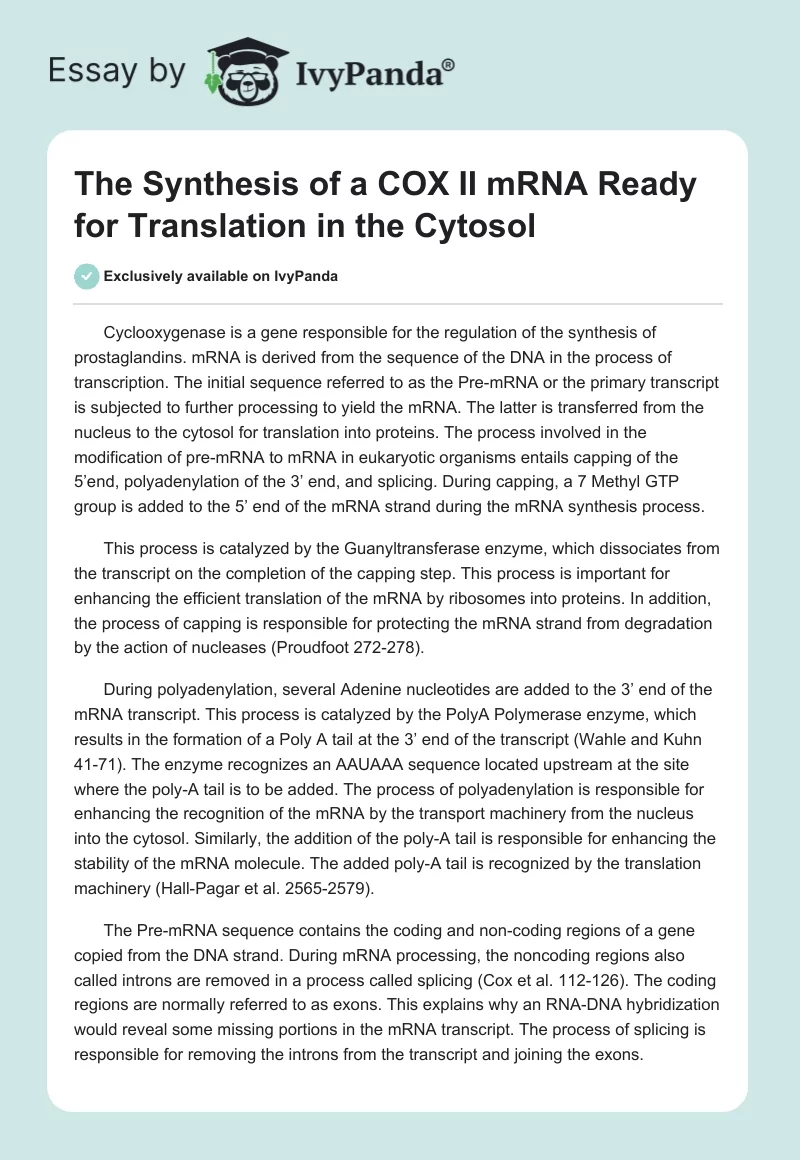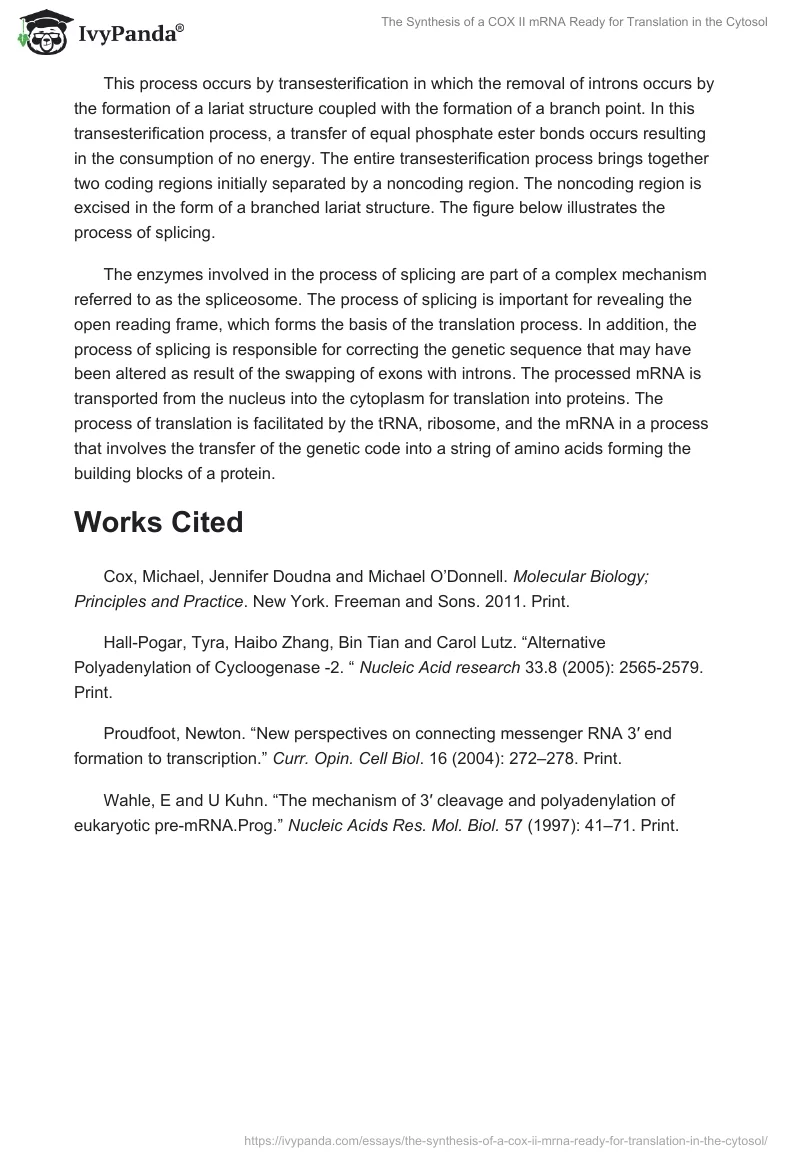Cyclooxygenase is a gene responsible for the regulation of the synthesis of prostaglandins. mRNA is derived from the sequence of the DNA in the process of transcription. The initial sequence referred to as the Pre-mRNA or the primary transcript is subjected to further processing to yield the mRNA. The latter is transferred from the nucleus to the cytosol for translation into proteins. The process involved in the modification of pre-mRNA to mRNA in eukaryotic organisms entails capping of the 5’end, polyadenylation of the 3’ end, and splicing. During capping, a 7 Methyl GTP group is added to the 5’ end of the mRNA strand during the mRNA synthesis process.
This process is catalyzed by the Guanyltransferase enzyme, which dissociates from the transcript on the completion of the capping step. This process is important for enhancing the efficient translation of the mRNA by ribosomes into proteins. In addition, the process of capping is responsible for protecting the mRNA strand from degradation by the action of nucleases (Proudfoot 272-278).
During polyadenylation, several Adenine nucleotides are added to the 3’ end of the mRNA transcript. This process is catalyzed by the PolyA Polymerase enzyme, which results in the formation of a Poly A tail at the 3’ end of the transcript (Wahle and Kuhn 41-71). The enzyme recognizes an AAUAAA sequence located upstream at the site where the poly-A tail is to be added. The process of polyadenylation is responsible for enhancing the recognition of the mRNA by the transport machinery from the nucleus into the cytosol. Similarly, the addition of the poly-A tail is responsible for enhancing the stability of the mRNA molecule. The added poly-A tail is recognized by the translation machinery (Hall-Pagar et al. 2565-2579).
The Pre-mRNA sequence contains the coding and non-coding regions of a gene copied from the DNA strand. During mRNA processing, the noncoding regions also called introns are removed in a process called splicing (Cox et al. 112-126). The coding regions are normally referred to as exons. This explains why an RNA-DNA hybridization would reveal some missing portions in the mRNA transcript. The process of splicing is responsible for removing the introns from the transcript and joining the exons.
This process occurs by transesterification in which the removal of introns occurs by the formation of a lariat structure coupled with the formation of a branch point. In this transesterification process, a transfer of equal phosphate ester bonds occurs resulting in the consumption of no energy. The entire transesterification process brings together two coding regions initially separated by a noncoding region. The noncoding region is excised in the form of a branched lariat structure. The figure below illustrates the process of splicing.
The enzymes involved in the process of splicing are part of a complex mechanism referred to as the spliceosome. The process of splicing is important for revealing the open reading frame, which forms the basis of the translation process. In addition, the process of splicing is responsible for correcting the genetic sequence that may have been altered as result of the swapping of exons with introns. The processed mRNA is transported from the nucleus into the cytoplasm for translation into proteins. The process of translation is facilitated by the tRNA, ribosome, and the mRNA in a process that involves the transfer of the genetic code into a string of amino acids forming the building blocks of a protein.
Works Cited
Cox, Michael, Jennifer Doudna and Michael O’Donnell. Molecular Biology; Principles and Practice. New York. Freeman and Sons. 2011. Print.
Hall-Pogar, Tyra, Haibo Zhang, Bin Tian and Carol Lutz. “Alternative Polyadenylation of Cycloogenase -2. “ Nucleic Acid research 33.8 (2005): 2565-2579. Print.
Proudfoot, Newton. “New perspectives on connecting messenger RNA 3′ end formation to transcription.” Curr. Opin. Cell Biol. 16 (2004): 272–278. Print.
Wahle, E and U Kuhn. “The mechanism of 3′ cleavage and polyadenylation of eukaryotic pre-mRNA.Prog.” Nucleic Acids Res. Mol. Biol. 57 (1997): 41–71. Print.


